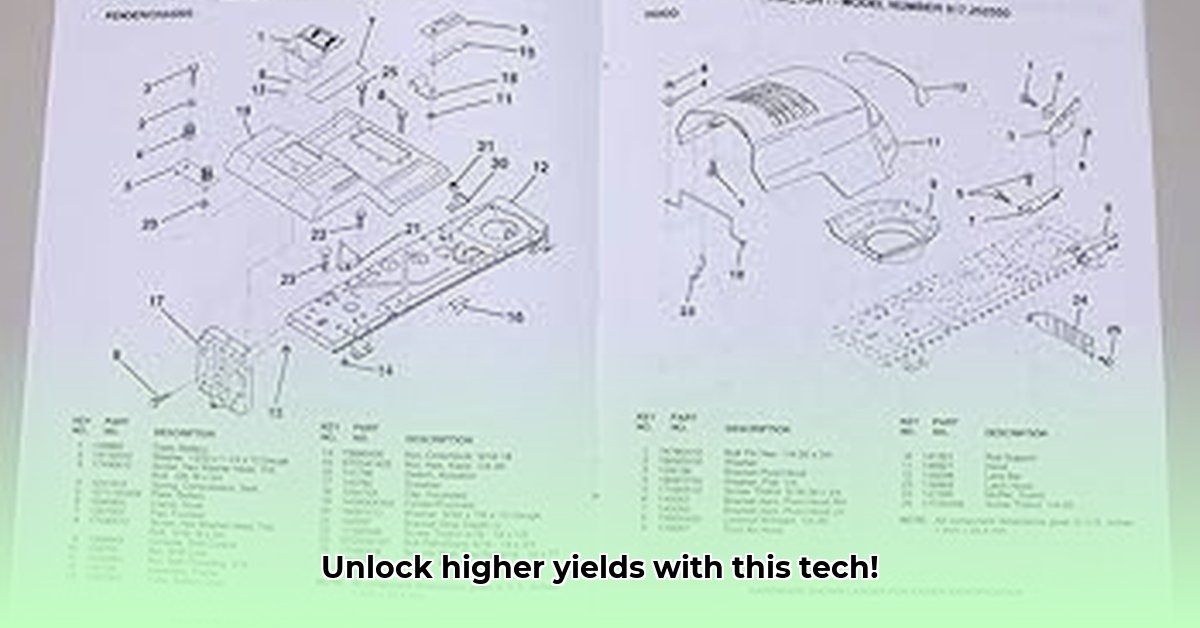
Craftsman Lawn Tractor Manual: Unlocking Sustainable Farming Through Clear Communication
Let's consider something familiar: the average Craftsman lawn tractor manual. While not exactly captivating reading, its effectiveness is undeniable. Consider its clear diagrams, step-by-step instructions, and even a troubleshooting section. This seemingly mundane manual offers a powerful lesson for sustainable agriculture: the critical need for clear, accessible information to ensure successful technology adoption. Without it, even the most groundbreaking farming innovations may remain unused. Isn't it ironic that a lawnmower manual can teach us so much about revolutionizing farming practices? For more on tractor manuals, see this helpful resource: Ford Tractor Manuals.
Bridging the Gap: From Backyard to Farmland
Sustainable farming demands technological innovation. New tools and techniques promise higher yields, reduced environmental impact, and improved farmer livelihoods. However, simply possessing the technology isn't sufficient. Farmers need to understand how to utilize it effectively. Consider the difference between mowing with a dull blade versus a sharp one on a well-maintained Craftsman tractor. The latter is efficient, productive, and less frustrating. The same principle applies to farming technologies. A sophisticated irrigation system is useless if farmers lack understanding of its operation.
This isn't solely about language skills, though that's a significant component. It encompasses accessibility in various forms. Does the manual utilize pictures? Are there videos? Is it available in multiple languages? Many farmers may struggle with complex jargon, low digital literacy, or a lack of time. These barriers can hinder technology adoption. We must address factors such as limited internet access, preference for hands-on learning, or cultural nuances that impact information comprehension.
Making Sustainable Tech User-Friendly: Practical Steps
To make sustainable technologies accessible and easy to learn, consider these steps:
Simplified Guides: Instead of dense technical manuals, create concise, easily understood guides focusing on essential steps and vital information. Use bullet points, clear headings, and ample white space to enhance readability.
Multilingual Support: Information must be available in the languages farmers speak. This goes beyond translation; it requires cultural sensitivity. A word-for-word translation might not convey the intended meaning effectively without addressing cultural nuances.
Visual Learning: Pictures and videos are often more effective than text, especially for complex processes. Use diagrams, photos, short videos, and interactive tutorials to enhance engagement and comprehension.
Online and Mobile Learning: Online training modules and mobile apps provide flexibility, allowing farmers to learn at their own pace. These resources can be easily updated, responding to user feedback and technological advancements. This mimics the constantly updated nature of online manuals for technology.
Community-Based Solutions: Farmers learn best from peers. Encouraging knowledge sharing within farming communities through workshops, demonstrations, and mentoring programs fosters a supportive learning environment and builds confidence.
Success Stories: Making a Difference
Numerous initiatives showcase the power of accessible information in promoting sustainable farming. Community-based learning programs effectively leverage existing farmer knowledge. Government-backed training programs provide hands-on learning and demonstrations. NGOs adapt outreach strategies to meet the unique needs of specific communities, incorporating local languages and cultural considerations into their programs. These successes demonstrate that the investment in easily accessible information pays off in real-world results. Quantifying these outcomes, however, remains a challenge, highlighting the need for further research and data collection efforts on technology transfer initiatives.
The Bottom Line: Clear Communication is Key to Sustainable Progress
The future of sustainable agriculture hinges on farmers adopting innovative technologies. Clear communication is vital – a point illuminated by the well-structured instruction manuals accompanying many products. By applying the principles of clear, accessible communication, we can empower farmers to adopt sustainable practices, improve yields, enhance their livelihoods, and contribute to a healthier planet. Investment in clear communication is an investment in the future of food security and environmental sustainability. Do you agree that accessible learning materials are crucial for widespread adoption of sustainable farming technologies? This is a crucial question to consider as we move forward.